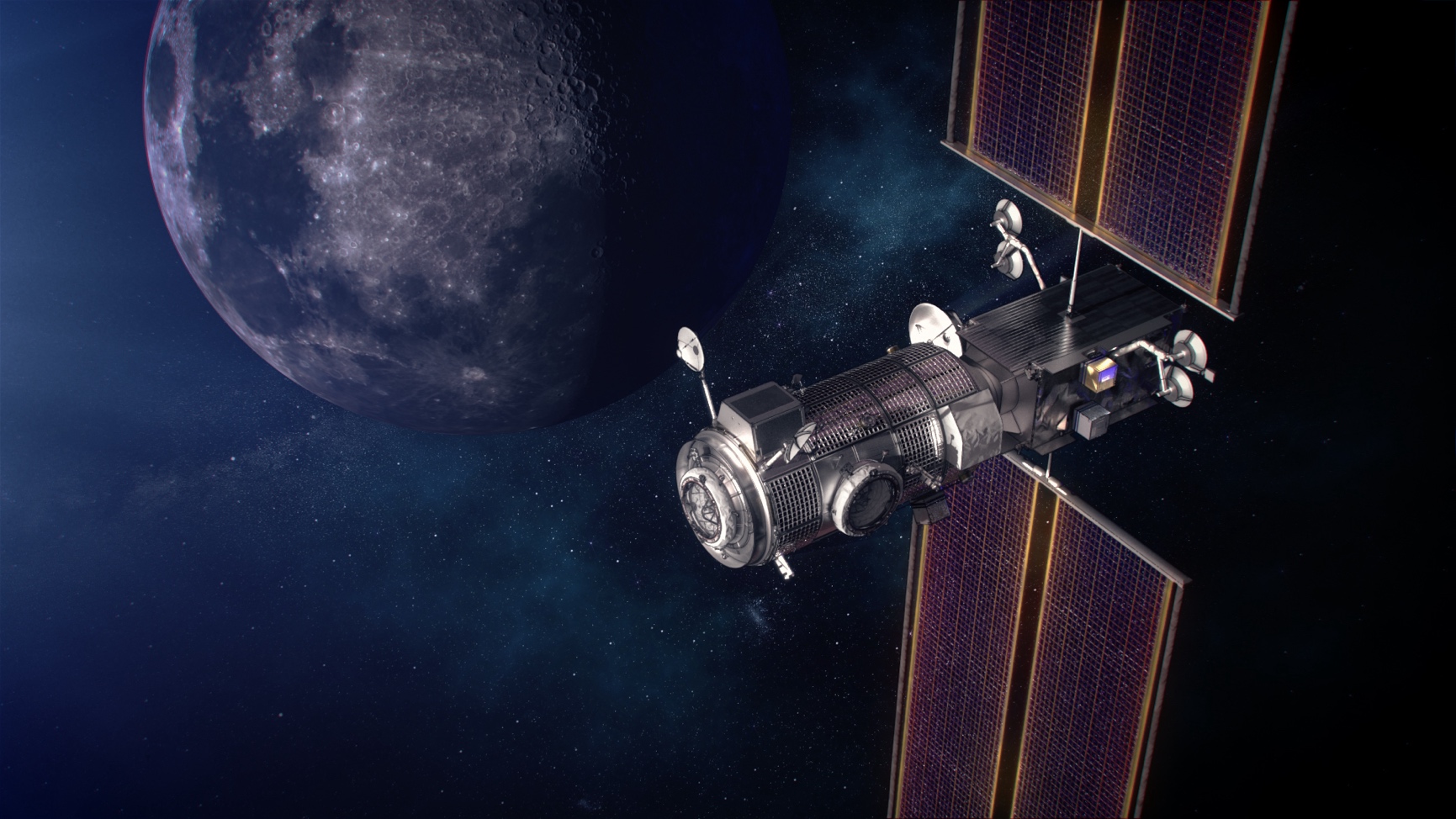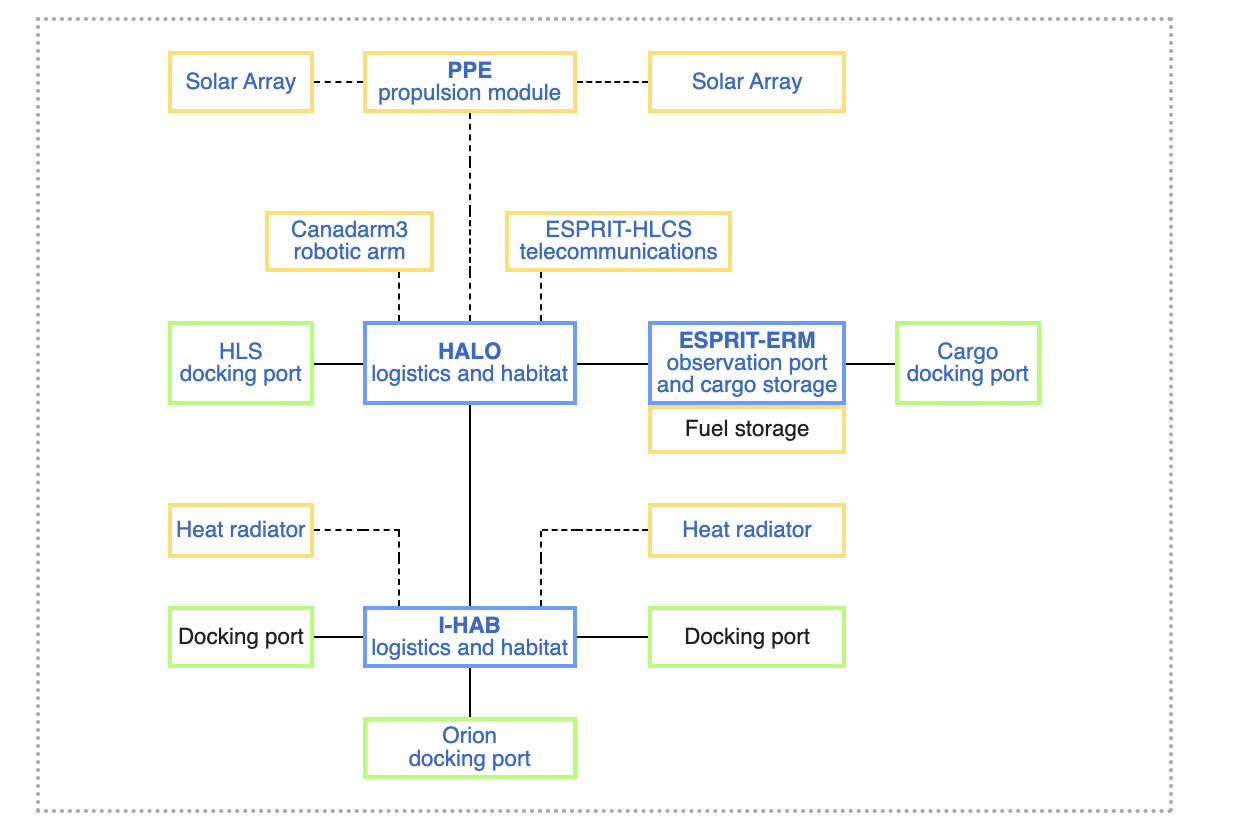Description

Disclaimer: Copyright infringement not intended.
Context
The UAE has recently announced its participation in the development of NASA's Lunar Gateway Station, a monumental project aimed at deepening human exploration and understanding of space.
Details
UAE's Role in the Lunar Gateway Project
- Module Development: The UAE's commitment involves the development of the Crew and Science Airlock module on NASA's Lunar Gateway Station, collaborating with the USA, Japan, Canada, and the European Union.
- First Emirati Astronaut: Additionally, the UAE plans to send its first Emirati astronaut into lunar orbit as part of this pioneering project.
- Technological Advancement: This contribution aims to reinforce the UAE's global standing in space science and technology, enhancing its presence in these pivotal fields.
- Launch Schedule: While the first elements of the Gateway are expected to be launched by 2025, the Emirates Airlock is planned for launch by 2030.
- Airlock Development Stages: The process involves five primary stages, including planning, design, qualification, flight preparation, and operations. These stages encompass the development, testing, and integration of the Airlock unit into the Lunar Gateway Station.
- Artemis Mission Focus: The UAE's participation in the Lunar Gateway Station aligns with NASA's Artemis program, aimed at returning humans to the Moon and establishing sustainable lunar missions.
.jpg)
About the Gateway
- The Lunar Gateway, also known as the Gateway, is a pioneering extraterrestrial space station designed to orbit the Moon.
- Collaboratively developed by several prominent space agencies including NASA, ESA, JAXA, CSA, and MBRSC, it aims to serve as a versatile platform with multifaceted functionalities, including communication, scientific research, short-term habitation for astronauts, and a staging area for rovers and other robotic missions.
Timeline:
2017:
- September 27: An informal joint statement on cooperation between NASA and Russia's Roscosmos regarding the Gateway program was announced. This marked an early step toward international collaboration.
2018:
- Renaming Proposal: The station was renamed Lunar Orbital Platform-Gateway (LOP-G) in NASA's proposal for the 2019 United States federal budget, formerly known as the Deep Space Gateway (DSG). This renaming reflected a redefinition of its objectives and scope.
2019:
- Budget Allocation: The U.S. federal budget, signed into law on February 15, committed $450 million for preliminary studies related to the Gateway's development. This financial commitment marked a significant step in initiating the project.
2020:
- Roscosmos Concerns: In October, Dmitry Rogozin, director general of Roscosmos, expressed concerns about the program's perceived "U.S.-centric" nature. This raised questions about Russia's participation in the initiative.
2021:
- Roscosmos Withdrawal: In January, Roscosmos officially announced its decision not to participate in the Gateway program. This withdrawal by a major international partner posed challenges and impacted the dynamics of the project.
2024 (As of January):
- International Collaboration: The Canadian Space Agency (CSA), European Space Agency (ESA), Japan Aerospace Exploration Agency (JAXA), and Mohammed Bin Rashid Space Centre (MBRSC) are actively planning to participate in the Gateway project. They aim to contribute modules, robotic arms, refueling and communications hardware, habitation and research capacity, and an airlock module.
2025:
- November: Planned launch of the first crewed mission to the station (Artemis 3), intending to establish a minimalistic mini-space station composed of the Power and Propulsion Element (PPE) and the Habitation and Logistics Outpost (HALO).
- Launch of the I-Hab module, contributed by ESA and JAXA, as a co-manifested payload on the Artemis 4 crewed Orion mission.
Future Phases (Beyond 2025):
- Further Construction: Following the initial launch and assembly of core elements in 2025, the Gateway is expected to expand with additional modules and capabilities over subsequent years.
- Operational Phase: The Gateway aims to become fully operational by the latter part of the decade, facilitating lunar exploration missions and scientific endeavors.
Purpose:
- Multinational Collaboration: Involving space agencies from multiple countries, the Lunar Gateway represents a collaborative effort aimed at expanding human presence beyond low Earth orbit and into lunar orbit.
- Versatile Functions: It is planned to function as a solar-powered communication hub, science laboratory, and habitation module for government-agency astronauts.
- Scientific Research: The Gateway aims to support various scientific disciplines, including planetary science, astrophysics, Earth observation, heliophysics, fundamental space biology, and human health and performance.
- Artemis Program Support: It's poised to play a crucial role in NASA's Artemis program, serving as a staging point for both robotic and crewed exploration of the lunar south pole. Moreover, it's proposed as a transit point for NASA's Deep Space Transport concept aimed at Mars exploration.

Development:
- History and Evolution: Initially known as the Deep Space Gateway (DSG), it was later renamed the Lunar Orbital Platform-Gateway (LOP-G) in a NASA proposal.
- Budget and Commitments: In 2019, the United States federal budget allocated $450 million for preliminary studies related to the Gateway's development.
- International Participation: As of January 2024, Canada, Europe, Japan, and MBRSC plan to contribute various modules and components to the Gateway project.
- Construction Phases: The initial phase involves the launch and assembly of the Power and Propulsion Element (PPE) and the Habitation and Logistics Outpost (HALO) in 2025, followed by further expansions.
Key Components:
- Habitation Module: Living quarters for astronauts during their stay in lunar orbit, equipped with life-support systems, sleeping quarters, and recreational areas.
- Laboratories and Science Modules: Facilities for conducting scientific experiments, studying the lunar environment, Earth observation, and preparing for future deep-space missions.
- Solar Electric Propulsion (SEP) System: A high-power propulsion system utilizing solar energy to adjust the station's orbit and move between different lunar orbits.
- Docking Ports and Airlock Modules: Essential for spacecraft docking, allowing crewed and uncrewed vehicles to rendezvous with the Gateway and transfer astronauts and cargo.
- Robotic Arm: To assist with assembly, maintenance, and manipulation of payloads, modules, and equipment.

Disclaimer: Copyright infringement not intended.
Conclusion
The Lunar Gateway represents a significant leap in human space exploration, offering a versatile platform for lunar surface missions, scientific research, and preparation for future deep-space endeavors. As an international collaborative effort, it embodies the spirit of cooperation among space-faring nations, fostering advancements in space technology, scientific discovery, and human presence beyond Earth's orbit.
|
PRACTICE QUESTION
Q. Explain the significance of international collaborations, like the Lunar Gateway project, in advancing global space exploration endeavors and fostering scientific cooperation among nations. (250 Words)
|











